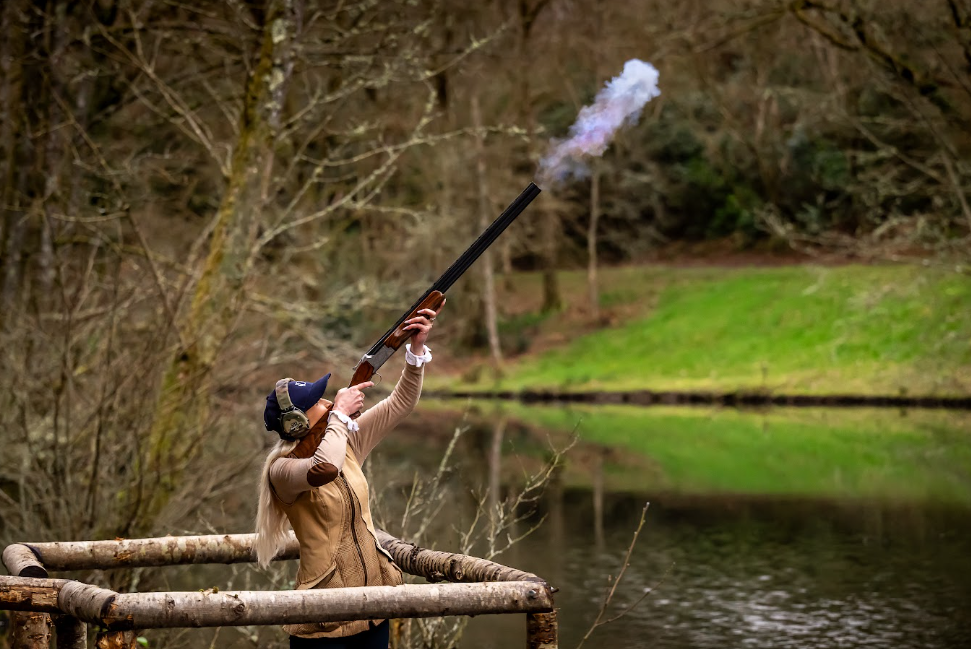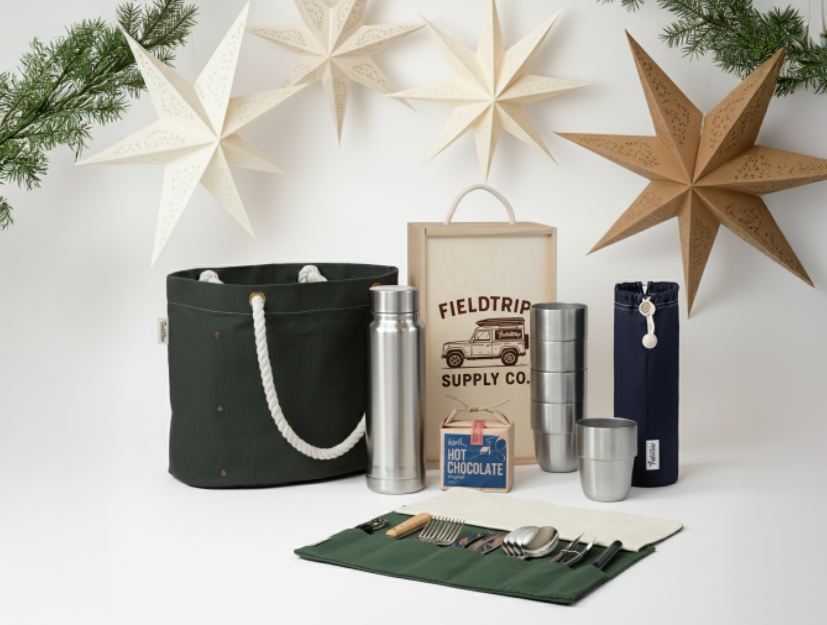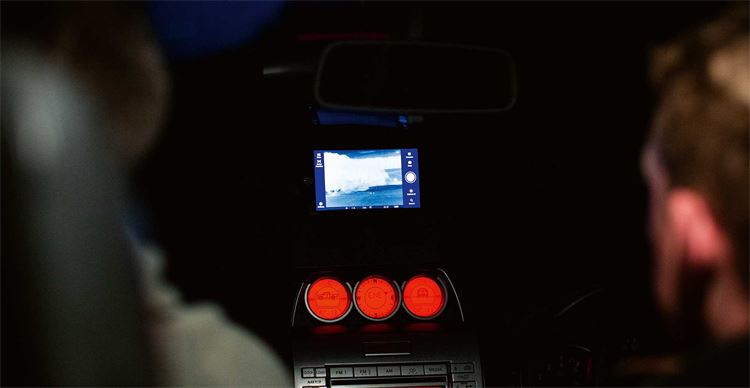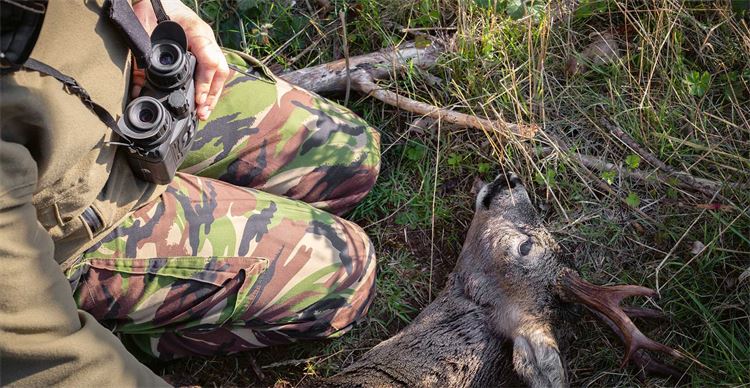The hot topic
Technology has come a long way over the past few decades; we’ve seen great change in the tools and equipment available to both sportsmen and professional countryside managers.

Technology has come a long way over the past few decades; we’ve seen great change in the tools and equipment available to both sportsmen and professional countryside managers. Examples abound, from moderators and optics to drones, pigeon ‘magnets’, GPS and trailcams – even shooting sticks have evolved from simple hazel poles to adjustable carbon fibre offerings. But perhaps the greatest advance – and certainly one of the most discussed – is that of thermal imaging technology in its many guises and applications.
For the purposes of countryside management, thermal imaging equipment generally takes the form of monoculars, scopes and binoculars. It works by detecting infrared radiation (heat) which is highlighted on a display of black and white or an array of colours which represent temperature. From this the operator can differentiate between various levels of heat intensity. A warm-blooded animal, for example, shines bright against a background of vegetation.
The technology can be operated equally well at day and night and does not require any visible light to produce an image. ‘Night vision’ differs from thermal, relying on at least some ambient light – usually provided by an ‘IR illuminator’ – that is deflected off the subject and back to a detector that forms an image.
Of course, the reliability and clarity of thermal imaging technology depends on the product being used; thermal units can range in price from a few hundred pounds to over £5,000. I’d used various models in the past, but for the sake of this article sought out the most recent, high-end offering from Pulsar, the XP50 LRF Accolade binoculars.
There’s no doubt the technology has its fair share of avid proponents, but there are those who remain unconvinced and question its place, certainly in the realms of recreational fieldsports. Such is the range of applications for thermal imaging equipment, whether the positives outweigh the negatives is a highly subjective matter. The circumstances of use will differ from one person to another; a thermal might be used for counting partridges, estate security, following-up a shot deer, vermin control, or all of the above.
The first negative to spring to mind for most is how such apparatus might take away from the purity of an experience. Deer stalking is a prime example; there’s an element of hunter-gatherer-provider that still burns strong in many of us, and there are those who believe technology conflicts with the simplicity that is so intrinsic to their enjoyment. On the other hand, those managing deer where populations are particularly high or where there is a zero-tolerance approach, might reasonably argue that such sentiment is quite unhelpful when under pressure to meet cull targets. Years ago I’ve no doubt stalkers had the same discussion about scopes versus open sights.
Does thermal reduce the need for sound fieldcraft? I’d say not. Certainly, deer in woodland edge or light cover are easier to spot in the first instance. And being able to see in near darkness is useful when stalking into a high seat before first light so not to bump deer. Those using thermal might gain a useful few seconds to prepare before the quarry presents itself, too – particularly useful for mobile animals like muntjac and foxes. But the technology does not help you gain ground on a deer or get into a suitable shooting position – the extra kit might actually be a hindrance. Wind, concealment and careful, selective movements remain key. And normal binoculars are still required to closely examine the animal in question before committing to a shot.
It’s the stage after squeezing the trigger where many will find the thermal of great use: the follow-up. This is where the technology scores points for ethicality as well as practicality; the number one priority of any stalker is the quick and humane expiration of their quarry, and then finding said quarry in a timely manner thereafter – particularly in warmer weather where carcasses are more prone to spoil.
It should be made clear here that thermal technology cannot penetrate thick cover in an X-ray fashion. But it is possible to spot animals – dead or wounded – that would otherwise be difficult to see in light or broken cover. In the case of a misplaced shot, there is less chance of bumping the quarry if it can be seen and approached carefully from a distance – an advantage not always offered by a tracking dog. That’s not to say a tracking dog is rendered redundant, though. Far from it. A blood trail can only be followed with a thermal imager if still warm, which offers a short time window – and one most will sensibly sit out if they suspect the shot not to have found its mark. Let’s not forget many shot deer make it out of sight if the adrenaline is pumping and thick cover is nearby.
In late April I used the Accolade binoculars to find a roebuck that had carried on into a young plot of woodland after the shot. The strike sounded good and the reaction was typical of a well-placed bullet in the chest, but there was no sign of blood, hair or bone fragments at the shot site. Walking along the side of the plantation and scanning up the rows, I was able to easily spot two small parts of the buck not concealed by bramble as bright glowing areas on the display of the thermal unit, before approaching it carefully ready to take a follow-up shot if required. It wasn’t necessary as the shot had ruptured both lungs and the buck was dead, but to have that advantage is not to be sniffed at.
It is worth remembering that cull targets require a rough idea of a species’ population. Here, thermal technology can be useful to an extent – particularly for species such as fallow and red that can range reasonable distances within a 24-hour period and may not be present during censuses conducted in daylight. That said, a deer’s heat does not generally extend to its antlers, so it can be difficult to sex animals at range.
Indeed, population counts of a wide array of species are an area that can be helped significantly by thermal technology, whether they be for grey partridges or brown hares. And for general reconnaissance – assessing where one’s partridges are roosting, for example – thermal can be very handy, as any disturbance is dramatically reduced. Again, there is a certain element of fieldcraft required here; identification of animals at range can be tricky. On most models, the digital magnification simply enlarges pixel size, so a hare might easily be mistaken for a rabbit, just as a curled-up vixen might appear to be a hare. Knowing how different animals move is crucial if one wishes to be able to scan areas of land with a thermal at reasonable speed, particularly at night.
‘Lamping’, whereby foxes and other vermin are shot under a high-powered torch beam, might seem the obvious application that thermal could replace. And many have made the switch with success. But it doesn’t seem long ago that a red filter was all the rage and gave us the ‘edge’, does it? What does thermal offer over the lamp? Well, it’s far more inconspicuous to start with – no need for a lamp beam sweeping the landscape. Lamp-shy animals are no longer problematic – provided you have a thermal scope too, that is…
With a light it’s quite possible to scan over an animal that is not looking at us, eyes shining bright. Speed can be an issue, though; a keeper well-versed with his/her ground can cover some acres in a vehicle with a roof-mounted lamp. Thermal imagers do not work through glass, so it’s a windows-down job, and even then a 360-degree view of things is tricky to achieve. That said, I know of people who have mounted thermal units to brackets on their roof top and then streamed the image via WiFi to a smartphone or tablet on the dash. Network connection can be an issue, however, and it takes a brave person to attach a unit costing upwards of £1,000 to the top of a moving vehicle.
Finding a setting that minimises eye strain when switching from the bright screen of a thermal imaging unit to a conventional scope in low light or darkness is important; it can take a few minutes for one’s natural night vision to return to full strength after staring at a bright screen.
The safety and security benefits of thermal technology should not be overlooked. It’s not uncommon to find people where they’re not supposed to be in the countryside – a common issue where there is nearby public access. Thermal technology can help spot people who have strayed from a public right of way, just as it can pick up the heat signature of somebody up to no good.
Of great concern is that those who are up to no good are now using thermal units, too. Currently there is no licensing requirement for purchase and use of thermal imaging units in the UK. Even if there was, would it prevent such equipment from getting into the wrong hands? All of a sudden, a beneficial tool for countryside managers, gamekeepers et al, can be used against them – the poaching of deer a prime example.
As with standard optics, thermal technology works most effectively in clear environmental conditions. Moderate to heavy rain makes things very difficult. It is worth familiarising oneself with how a unit operates before heading out to get the most out of the many settings through which the operator can alter contrast, magnification, focus and even colour palette on some models. Most units now are relatively light and ergonomic, and some feature additional extras such as rangefinders and in-built cameras on which low-resolution images and videos can be captured.
Ultimately, there’s little doubt this technology offers significant advantages, but it’s down to the individual to appraise what it will offer them in their own specific circumstances. In my view, professionals will likely see more of a benefit than the recreational user; there’s no getting away from the fact that it’s quite a financial outlay if it’s not going to be used terribly often. FS
For knowledgable advice contact Paul at Scott Country:01556 503587 or visit scottcountry.co.uk
Get the latest news delivered direct to your door
Subscribe to Fieldsports Journal
Elevate your experience in the field with a subscription to Fieldsports Journal, the premium publication for passionate country sports enthusiasts. This bi-monthly journal delivers unparalleled coverage of game shooting, fishing and big game across the UK and beyond.
Each issue offers a stunning collection of in-depth features, expert opinions and world-class photography, all presented in a timeless yet contemporary design.
Save 10% on shop price when you subscribe, with a choice of packages that work for you. Choose from Print & Digital or Digital only with each journal delivered directly to your door or via the app every other month, plus access to past issues with the digital back issue library.








